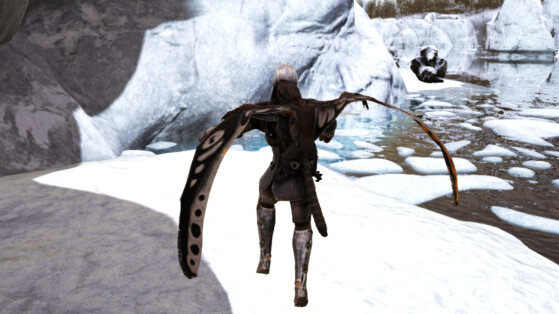In Ark: Survival Evolved, the Sinomacrops is at first glance a very small critter, useless and completely harmless, yet has a certain interest for the seasoned tamers. Its main peculiarity is that it can act as a parachute! In addition to that, it also reduces the bulk of the gear it carries when it’s on your back, and then it’s cute and that’s more than enough to make it a must-have dinosaur. In this guide we explain the most important things you need to know about this little bird.
Table of Contents
Where can you find Sinomacrops in Ark?
THE Sinomacrops is a DLC-exclusive creature Lost Islandit cannot be found on any other island and therefore players who do not own this DLC will not be able to find it.
On this island alone, this little flying dinosaur can be found absolutely everywhere, except in snowy areas. It generally appreciates tropical, even desert areas, places where there are quite a few individuals. Sinomacrops. He is especially recognizable because he does not really resemble the other flying creatures of the island, in particular due to his very small size and his very round shapes that give him a very friendly look.
THE Sinomacrops is not aggressive unless you are wearing Chitin Armor, in which case it will attack you on sight. Apart from this very specific case, he is very docile.
- It’s impossible to get one Sinomacrops. On the other hand, you can carry it on your back!
Peculiarities of Sinomacrops in Ark
- Parachute: If you carry it on your back, the Sinomacrops works like a parachute when you fall from a height. You can also ask him to carry you in the air until he’s exhausted by holding down the space bar (default).
- Scarecrow: If you select the “Enable Auto Screamin its radial menu, the sinamacrops will emit a cry every 60 seconds that will chase away any small creatures in the area, even if it’s on your back.
- Backpack: Like all portable creatures on your back, the Sinomacrops also halves the weight of its inventory. Just press “R” (default) to open his inventory when he’s on your back.
Taming: how to tame Sinomacrops?
Taming one Sinomacrops is particularly simple because it is done passively. However, you must respect a large number of rules so that he does not run away, because even if he is very docile, this little bird is frightened at the slightest sudden movement.
The idea is to feed it gradually chitin. To do this, assign this object to one of your hotkeys and slowly approach it while crouching, or else let it come towards you. After feeding him, Sinomacrops runs away: it’s normal. Chase him on foot until you’re no more than 100 feet away from him, then bend down again to manually feed him.
He will then run away again and you just need to repeat the process as many times as necessary until he finally becomes your little companion. However, keep a few things in mind before and during taming:
- It is not possible to track the movements of one Sinamocrops. For example, if he is trapped in a tent, taming is impossible.
- Wearing a camouflage outfit is not interesting: the Sinomacrops must be detected in order to tame.
- Chitin Armor makes the Sinomacrops violent.
- Put away your weapons and don’t fire projectiles near him.
- The predatory vision of the snowy owl scares the people Sinomacrops from far away.
How to grow Sinomacrops?
The reproduction of Sinomacrops requires the presence of a male and a female of this species.
Randomly and at a rate of about one egg every 18 to 48 hours, the female Sinomacrops lies one Sinomacrops Egg. The player can eat these eggs or use them for crafting croquettes simpleby Oil or to feed smaller dinosaurs (Dilophosaurus, Company, Troodon), but to give birth to a small one Sinomacrops you have to hatch the egg by placing it on the ground and provide it with acceptable conditions for the development of the young.
In case of Sinomacrops, her egg hatched at about 2:30 a.m. after being incubated under the right conditions. It needs a temperature between 38 and 40°C to hatch or it will lose health. It is also interesting to know that the incubation time can be reduced by up to 20% if the egg is placed in an incubator set at the ideal temperature.



